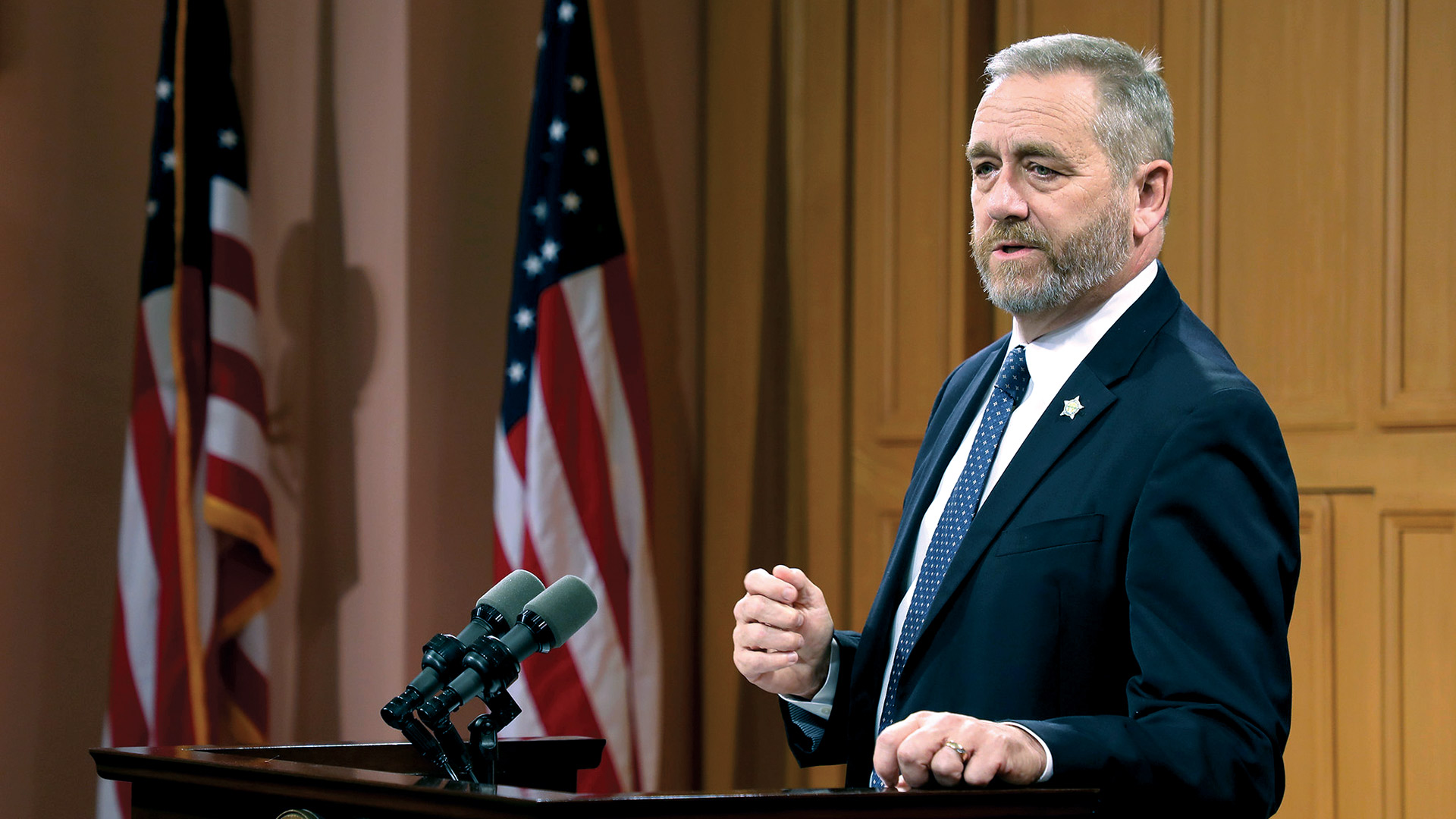[ad_1]

In an effort to enhance professionalism and accountability within law enforcement, Ohio Attorney General Dave Yost has put forth a series of recommendations aimed at revamping the state’s police officer training curriculum.
The proposals, announced on February 21, stem from a task force convened by Yost to reassess the existing training standards and elevate Ohio as a national leader in police academy education.
Among the key recommendations is putting greater emphasis on communication training for aspiring officers. Currently, Ohio mandates 740 hours of training for recruits, yet the task force identified a glaring gap in communication instruction, with zero hours allocated to this crucial skill.
Tom Quinlan, executive director of the Ohio Peace Officer Training Academy and chair of the task force, spoke on the importance of effective communication in law enforcement.
“Communication has become a real key piece that we found to be missing in the standard training for peace officers,” Quinlan said.
To address this deficiency, the task force proposes reallocating 72 training hours, primarily focusing on integrating 48 hours of communication training into the curriculum.
This shift aims to equip officers with essential communication skills, including de-escalation techniques and reading body language, crucial for navigating diverse interactions in the field.
Furthermore, the recommendations advocate for adjustments in physical fitness assessments, in view of the challenges in recruiting and retaining quality officers.
Currently, recruits failing to meet specific benchmarks in physical conditioning face dismissal from the academy. The proposed solution suggests offering leniency to recruits who pass two out of three physical tests, provided they achieve at least 75% sufficiency in the third test.
Quinlan said the change could help alleviate staffing shortages in law enforcement.
“In a time where it’s really hard to recruit and retain good quality officers, we find that we’re losing some people because of three or four seconds on a run, or one pushup or one sit-up,” Quinlan explained to the Dayton Daily News.
In addition to enhancing initial training, Yost’s task force highlighted the importance of continued professional development for working officers. Recommendations include revising the state’s mandate for 24 hours of annual training to incorporate courses aligned with best practices, particularly those approved by the Ohio Peace Officer Training Academy. Moreover, the task force proposes the creation of specialized training courses, such as an 80-hour program focusing on handling chaotic or agitated events requiring multiple-officer responses. The proposal also suggests leveraging technology, such as virtual reality goggles, to enhance situational decision-making training.
While these recommendations are not legally binding, Yost was confident in their swift approval and implementation by the Ohio Peace Officer Training Commission.
However, certain proposals may necessitate legislative action, which Yost aims to address by the end of the year.
[ad_2]




